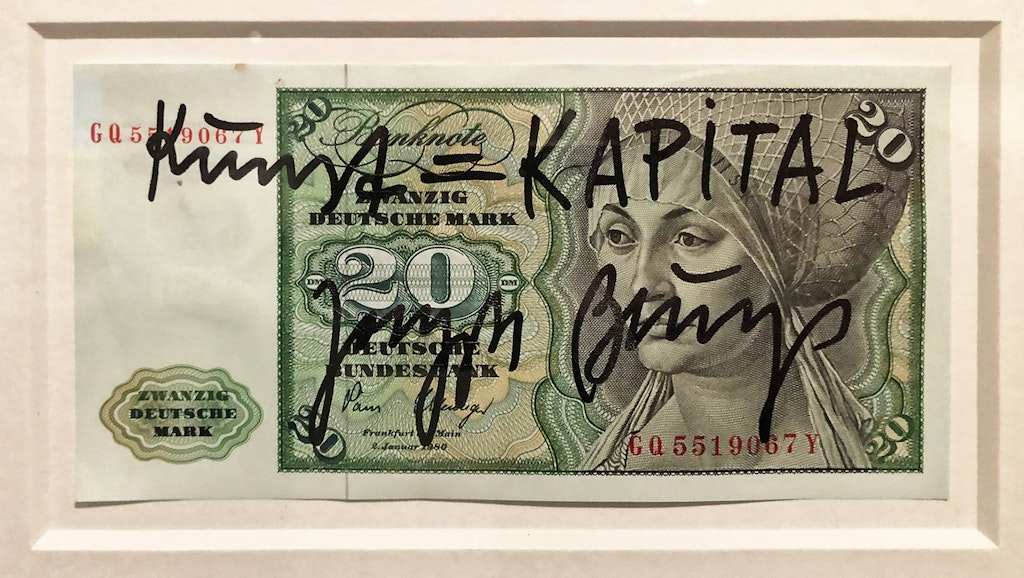The common thread of progress
Textile abundance has underpinned the modern world
Behind the exchanges of jumpers, socks and shirts this Christmas, many miracles will have been performed, unobserved and unappreciated by those swapping gifts. It is one of the unappreciated wonders of our time that we are able to produce so much fabric, so cheaply, in so many designs. As Virginia Postrel said in her absorbing and detailed history The Fabric of Civilization, we suffer textile amnesia because we enjoy textile abundance.
The production of thread has always been part of human history. The neanderthals made string, rolled on their thighs, and archeology suggests that production of fabrics is at least as old as agriculture and large settlements — probably older, as the material discovered is sophisticated and reliant on many generations of experimenting to discover the best techniques of production.
One pair of jeans today contains six miles of thread, which, if it were laid out, would stretch from Nelson’s column to Greenwich in the east or Chiswick in the west. What once required hundreds of hours of labour is now made in a fraction of the time. A modern factory employing one hundred and twenty people can produce nine million pounds of cotton, enough for eighteen million women’s T-shirts. That is 75,000 pounds of cotton per worker. In the days of the spinning wheel, that much cotton would have taken one woman three centuries to produce.
Nor is this merely the advancement of frivolous fashion. Thread and fabric keep us warm and dry; they allow us to carry our babies; they store and transport our goods. Without thread, the neanderthals would have had to find another way to stitch hides and hang food. It is what allowed early humans to fish and hunt, to hold up their clothes and tie down their prey. Today it allows us to wear comfortable clothes that are breathable, suitable to any activity from mountain climbing to watching Netflix.
As Virginia Postrel shows, fabric, thread and cloth were essential to the advancement of modern culture and the start of the industrial revolution. Weaving prompted the Greeks to study mathematics and inspired the early development of computing machines. Before anyone had heard of germ theory, a silk spinner discovered how disease spread through a population of silk worms. Patterns of warp and weft are an early instance of binary code. From the earliest instinct to decorate our clothes with patterns, we have slowly stumbled across many ideas foundational to civilisation.
Images of women at spinning wheels represent stages of advancement
Fabric has been a bringer of progress. The apparatus of fabric production that now looks old fashioned — looms, mills and spinning wheels — was once a set of symbols for innovation and disruption. The luddites were a group of skilled workers, commanding premium wages, upset to find that a new group of labourers had become more productive than them. Just as the luddites once disrupted the old ways of spinning thread, so they were disrupted in their turn. As technology advanced, so did wages. Often seen as an emblem of patriarchy, images of women at spinning wheels or in water mills actually represent stages of advancement. This was independent, skilled labour, and well paid. In the process of manufacturing cloth, the wages of women spinners were the second highest cost, only marginally cheaper than the price of the raw unspun wool. Mill work might have been unpleasant, but it commanded better wages than its predecessors.
As with so many aspects of progress, the free development of harmless products incensed the worser side of human nature, not just with the luddites but the protectionists too. In the 18th century, women in France were arrested for wearing chintz and calico, because of oppressive laws that worked in favour of French manufacturers. As well as being an affront to free expression, such laws encourage smuggling and black markets. As the Abbé André Morellet wrote, “Will out descendants be able to believe that our nation was truly as enlightened and civilised as we now like to say when they read that in the middle of the eighteenth century a man in France was hanged for buying in Geneva at 22 sous what he was able to sell in Grenoble for 58?” Renaissance Italy was more sensible, using the enormous worldwide trade to fund the renaissance. The artistic heights of the early modern world, from Florence to Holland, were funded by the trade in expensive cloth.
Today, innovation in fabric is everywhere, so abundant we hardly notice it. The materials of our clothes stretch, absorb, wick; they are softened and tempered; they keep the cold out better and repel water for longer. The new records of numbers of people reaching the summit of Everest is, in no small part, a story of fabric technology: explorers of old were wearing far inferior clothes. To achieve all of this, fabric remains part of the ongoing advances in chemical engineering. As Postrel says, the science, history and economics of fabric are, in no small part, the story of civilisation.
Enjoying The Critic online? It's even better in print
Try five issues of Britain’s most civilised magazine for £10
Subscribe














